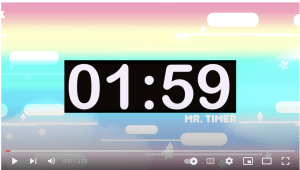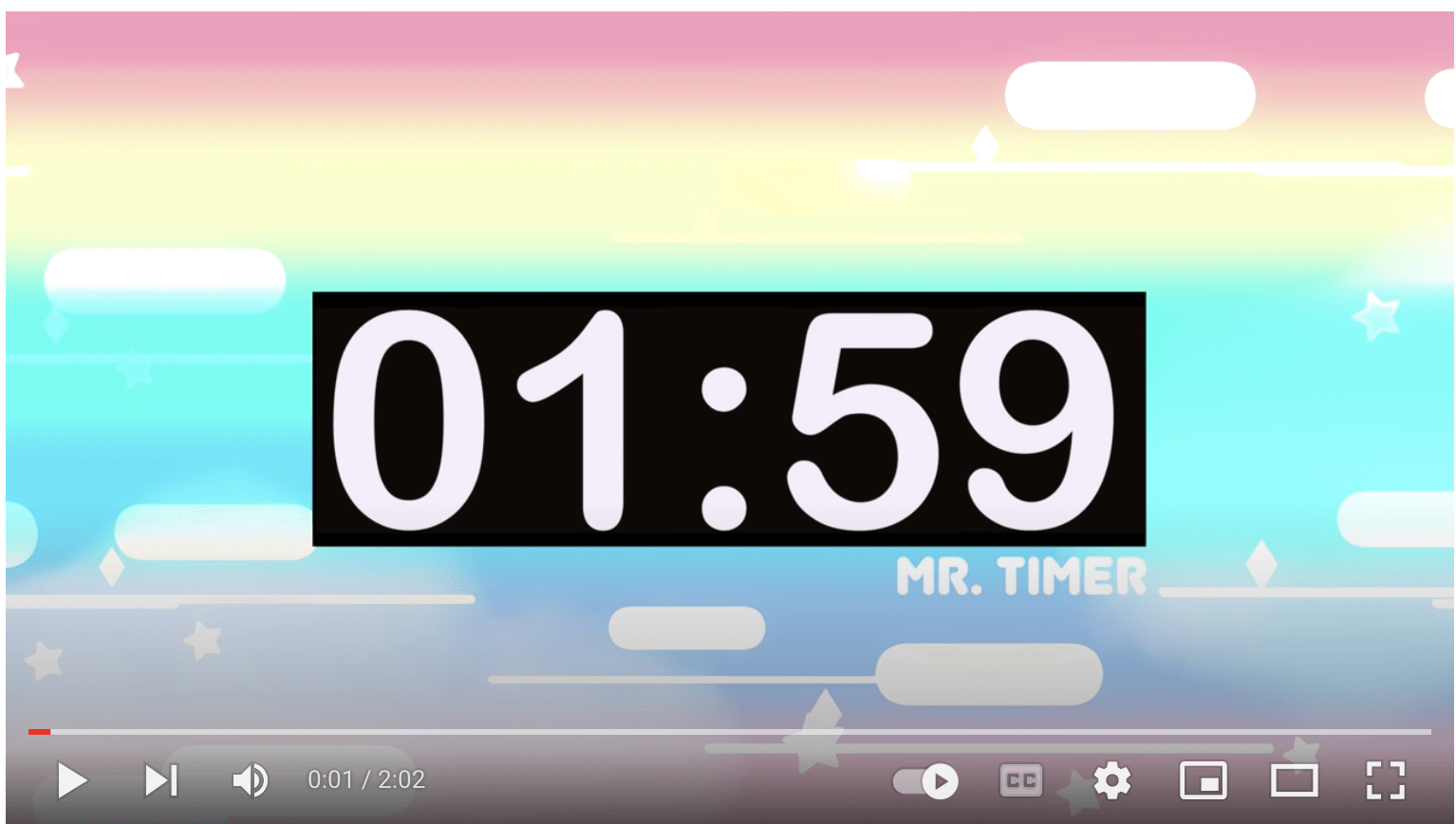Student Contributor: M. McLeod
 Timers can be used to facilitate smooth transitions in the classroom. You can choose any length of time for your timer, whatever works for you. Timers for transitions also provide brain break’s for students throughout the day.
Timers can be used to facilitate smooth transitions in the classroom. You can choose any length of time for your timer, whatever works for you. Timers for transitions also provide brain break’s for students throughout the day.
This tool is super easy to implement into your classroom and can be done in a variety of ways. You can get a physical timer and start it each time you transition, or you can look up timers on YouTube. In my classroom we use timers from YouTube, typically ranging from 1-4 minutes. To use the timers simply display the timer on the board so the students can see how much time is left. Before starting the timer give the students their instructions for what you’re transitioning to (ex. Transitioning into math; tell students that they’ll need their math books and to be back at their own seats.) this lets the students know what they need and where they need to be when the timer goes off. While the timer is going the students can get up, move around, and talk to their peers. These timers are great for when students are getting restless and need a brain break and they also allow for the teacher to have a few minutes to prepare for what’s next if needed.
I placed transition timers in the preventative phase as this is the best fit. Transition timers fit well into the preventative phase because they can be implemented and established in your classroom early on and they allow students brain breaks before each section of the day allowing them to engage better throughout lessons. This tool could also fall in the supportive phase as it supports student learning by allowing them to get energy out before focus time. As far as theories go, I would say that this fits best in student directed and collaborative. This tool fits best here as it is used to facilitate smooth transitions and brain breaks to help the classroom run smoothly.
More Information –
Tool Source: Mentor



In my 6th grade classroom, we teach three different groups of students. There are 20-24 students in each class from an urban area. Each group has students who are from a variety of cultures and speak a variety of languages. We have students who have different processing disorders and attention deficits. This tool was very easy to prepare for. There are a variety of timers for various times with different visuals or no visuals. This was very easy to use, I would set expectations with the students “You have 2 min! when it reaches zero you should have your material and be back in your seat and ready to learn.” To help them keep track of time I would call out 30 sec increments to help with the vocal factor as well. The students were used to the 5-4-3-2-1 countdown and were excited to have more time and the visual aspect to help keep in mind the goal, and often try to beat the timer. Students understood their role and worked hard and safely raced to beat the timer when they did beat the timer that was extra time for them to talk until the time was up.
One tool that I used I’m my placement was a corrective tool. This were tested on the 12
students who are in my 5th grade class. The setting of the school that I am placed at is a rural
school. First starting off with the preventative tool that I used which was the timer, there was
some planning involved as far as figuring out if I needed to use the timer for independent work, or if we were going to work on it for the whole class. Teaching students this tool was pretty simple. I told them that I was going to be putting up a timer for how long they get to work so that they had the opportunity to decide on how they would like to use their time. I explained to the students that once the timer was up we were either going to move on or go over it depending on the assignment they were working on. As far as how I used this tool and how it worked in the classroom, I would say that it was overall successful. There were a few times that I had to restart the timer because students still needed some more explanation before they understood what their role was, but they understood that I was going to be moving on. I would also say that for the most part students understood what their role was and what they needed to do while the timer was going. I do think that there are some adjustments that need to be made to make it better. The first one is trying to appropriately gauge how much to set the timer for so that students are not bored but they also so not have to feel like they are being rushed and that I think will come over time. The other one for me is making sure that there has been a thorough explanation before setting the timer, otherwise it has to be reset again and that is just time that gets wasted.